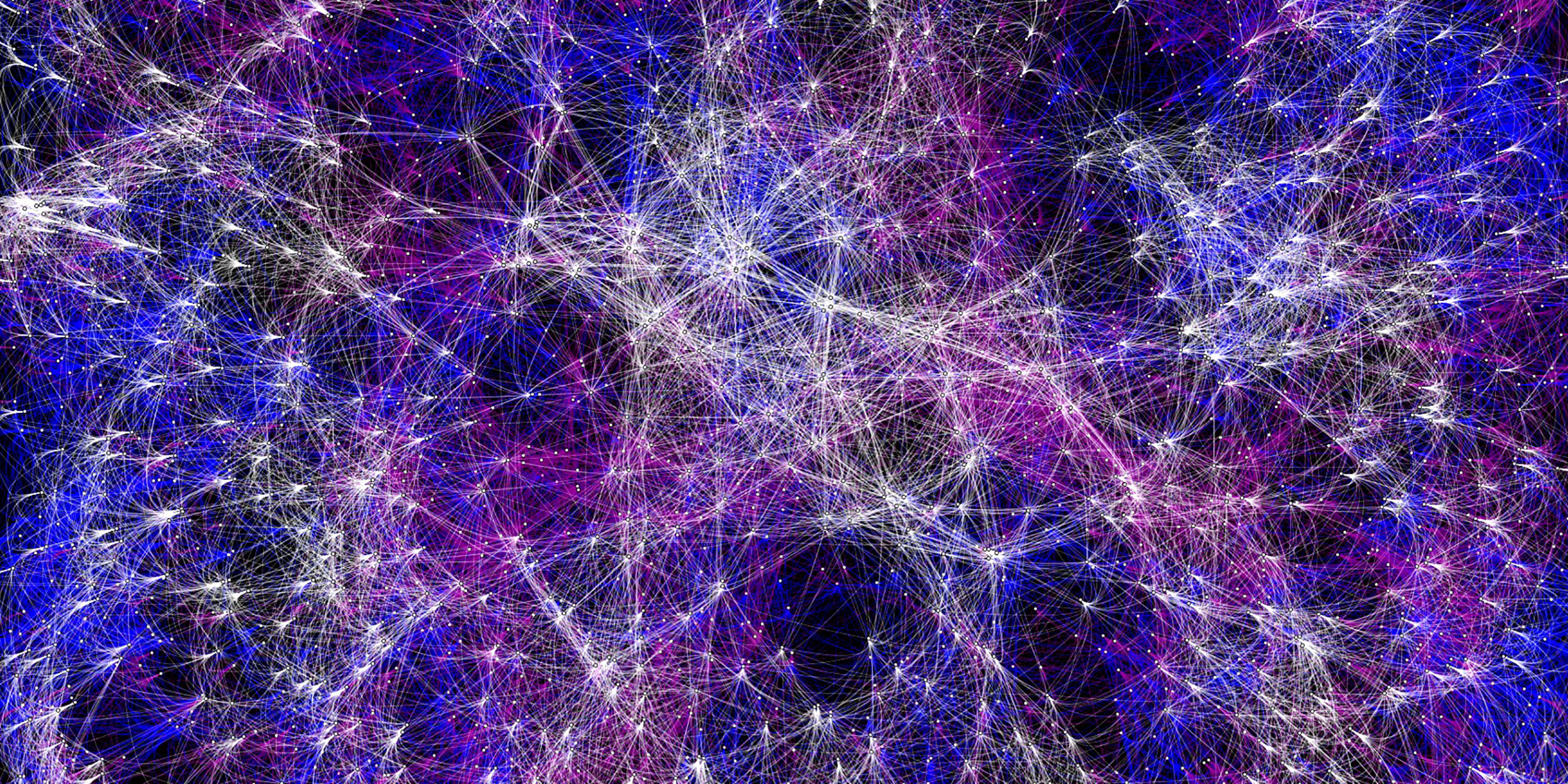Originally published 16 June 1986
Let’s talk fashion in science. Let’s talk bandwagons. Let’s talk string.
String. It’s everywhere in physics and astronomy these days. It’s beginning to look as if the whole universe is tied together with string.
Last week in this column I wrote about cosmic strings, those supermassive threads of energy that were formed, according to some theories, in the first moments of the Big Bang and still wend their way through the fabric of space.
Another kind of string is fashionable among the physicists who ponder matter and force on the subatomic scale. In fact, string is so hot among particle physicists that some of them think they are close to a “theory of everything.”
At the heart of the new string theory is an idea of stunning simplicity: The fundamental particles of the universe are not pointlike objects, as previously supposed, but little snippets of one-dimensional string.
Wriggling particle strings
The particle strings (called “superstrings”) are very short: 100 billion billion times shorter than the diameter of the nucleus of an atom. But even that little bit of length is enough to save string theory from some of the mathematical problems that plagued point theories of particles.
The little subatomic strings wriggle and rotate. Like violin strings, the particle strings can vibrate only in certain determined ways. For violin strings, the allowed modes of vibration give rise to the notes of the musical scale. For particle strings, the modes of vibration give rise to the properties (such as mass and spin) of particles of matter — quarks, electrons, muons, and neutrinos. Matter, then, appears as a kind of subatomic music, a development that would please Pythagoras.
Moreover, the ways the vibrating strings interact with one another — linking up end-to-end or making loops — correspond to the particles of force: the graviton (the carrier of the gravitational force) and the gauge bosons (the carriers of the electromagnetic, weak, and strong forces).
So superstrings wriggle and dance, and the ways they wriggle and dance account for the universe we live in. What makes superstring theory so exciting is the way it completes Einstein’s dream of unifying all the forces of nature in one elegant mathematical theory — the long sought for “grand unification.” String theory is the first theory to successfully include gravity with the other forces of nature. This unification flows from superstrings with a surprising simplicity — no fudge constants and fewer arbitrary assumptions.
String theories of matter and force have been around for a long time, but calculations based on the theories kept producing troublesome infinities, and other inconsistencies called “anomalies.” Then, in the summer of 1984, physicists John Schwarz of Caltech and Michael Green of Queen Mary College in London found a way to remove both the infinities and the anomalies. Suddenly the promise of string theories was realized and the bandwagon began rolling. Since then it has been string, string, string.
The invisible dimensions
There are problems, however. For example, the theory of Schwarz and Green requires that the universe have 10 dimensions: nine of space and one of time. And yet it is obvious that the universe we live in has only four dimensions. Schwarz and Green suppose that six of the space dimensions got somehow rolled up onto themselves in the first moments of the Big Bang. Those tightly curled extra dimensions are presumably still with us, but they are only apparent at the scale of the superstrings themselves.
And it must be admitted that superstring enthusiasts do not really understand what lies behind the astonishing success of their theory. They have a beautiful mathematical structure that works, but no concise philosophical insight into why nature chooses this structure rather than another.
There are two principles that guide these elaborate mathematical games of the theoretical physicists. One is that the end results of their calculations must match what we observe in nature. Superstrings do well at accounting for what we already know of matter and force. However, a direct observation of the strings themselves is far beyond the present capabilities of experimental physics.
The second principle guiding theoretical physicists is that of explaining the most with the least. The elegance of a scientific theory derives from its generality and its simplicity. On both counts, superstrings score high.
Strings are hot. Don’t be surprised to see a Nobel Prize fall into the lap of Schwarz and Green. More than anything that has gone before, superstrings promise to be a theory of everything. What it all means is anybody’s guess.
String theory still resides on the forefront of theoretical physics. In 2014, Schwarz and Green were awarded the Breakthrough Prize in Fundamental Physics. ‑Ed.



